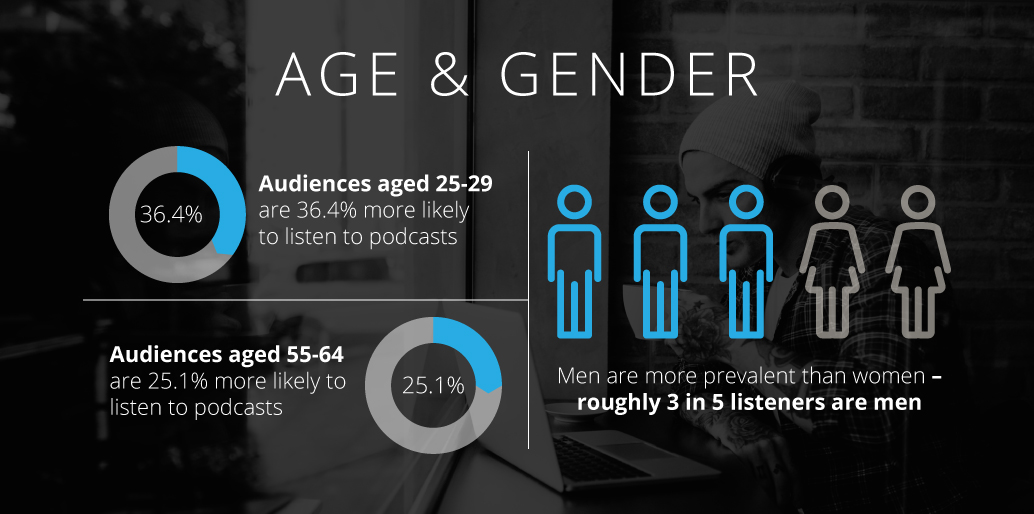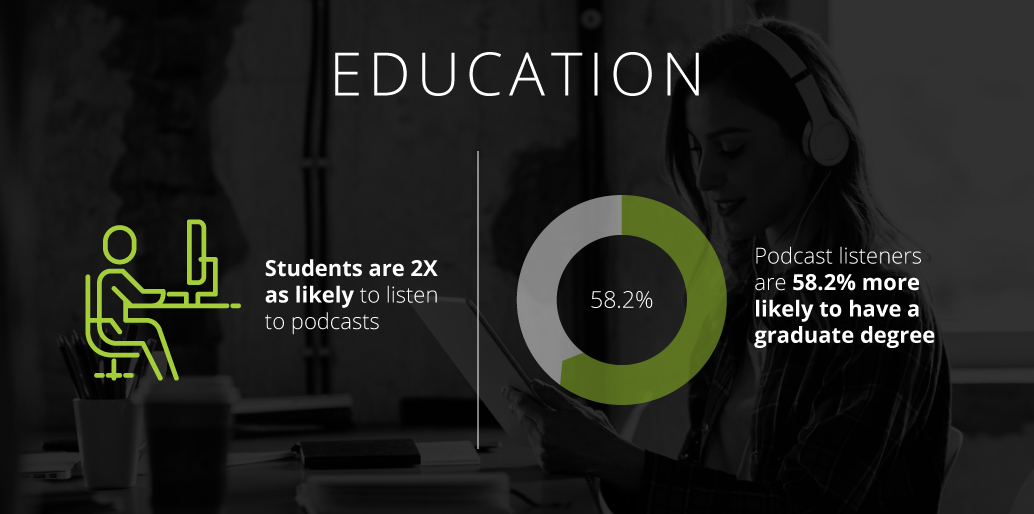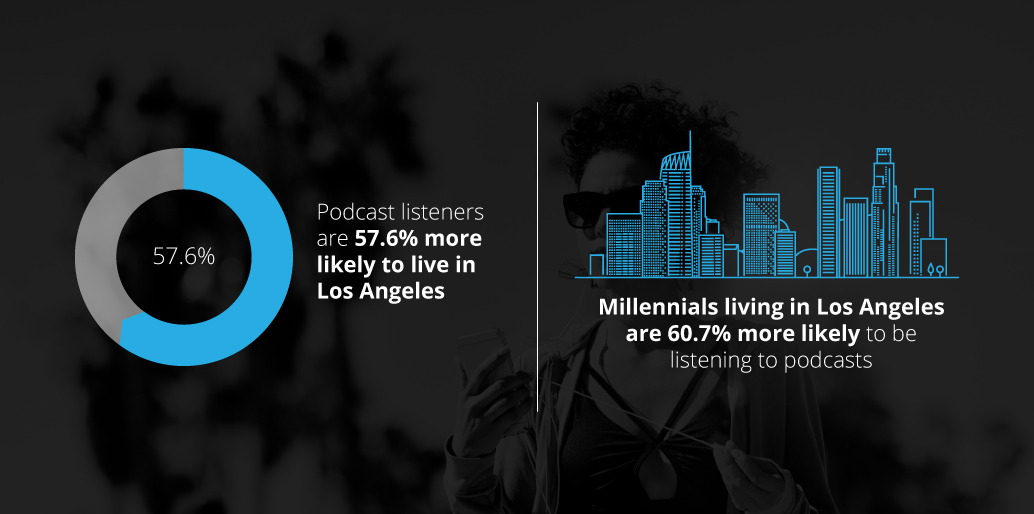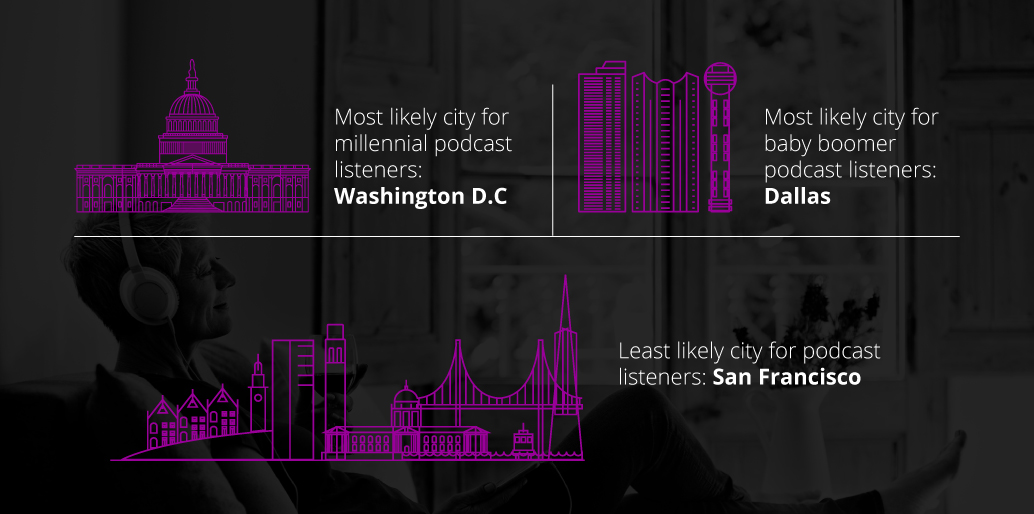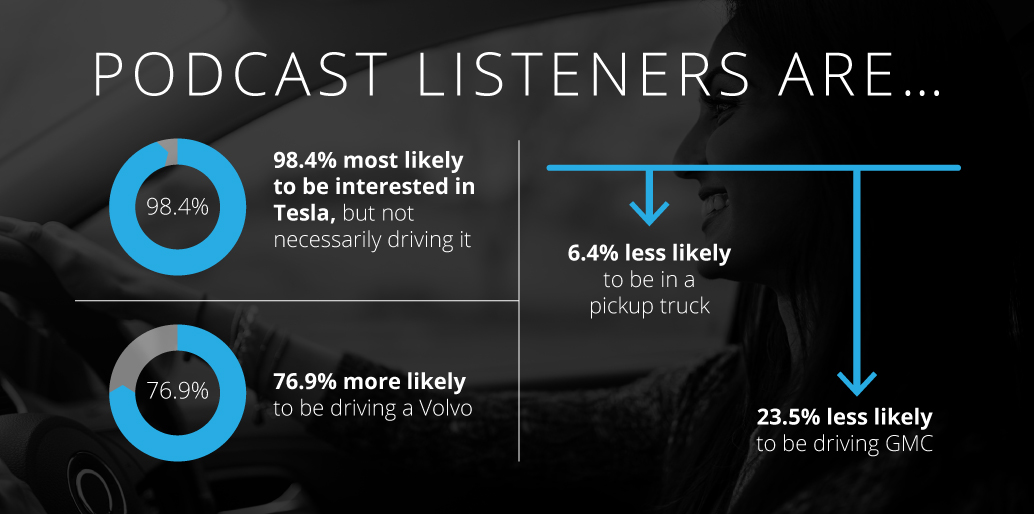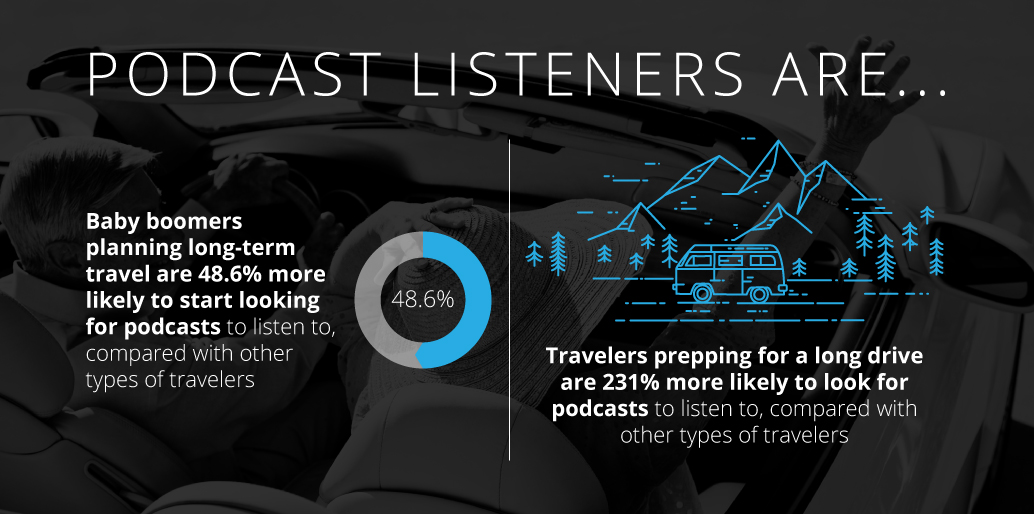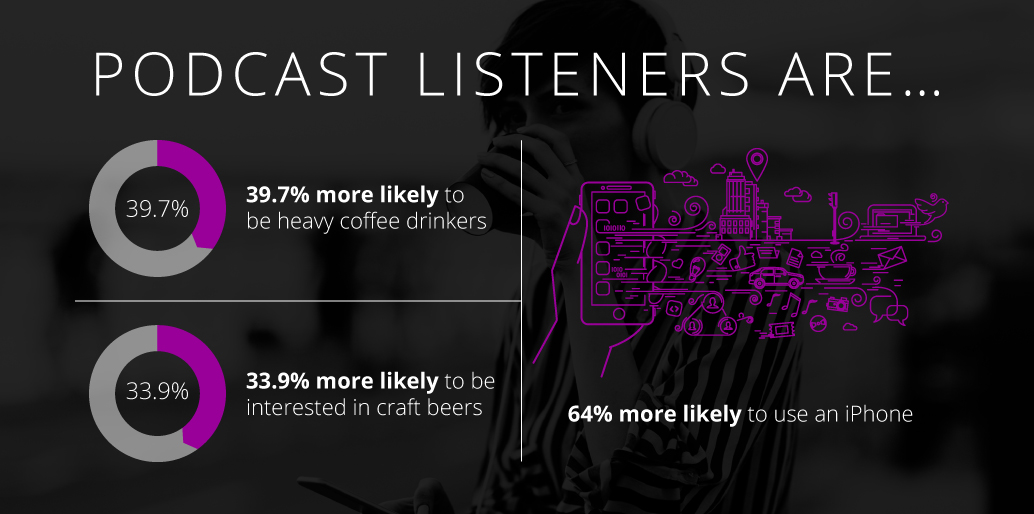The modest podcast has experienced a tremendous surge in popularity over the past few years. As a testament to the medium’s growth, we’re seeing many leading brands and venture capital-funded companies adopting podcasts as a promotional channel to drive brand awareness and engagement. And it seems to be working.
According to Magid’s “Mobile Lifestyle Study 2017”, 41% of U.S. mobile users are more likely to look up an item or service that was advertised after hearing a podcast ad and 28% purchased the item or service that was advertised. The challenge for many advertisers is knowing who these podcast listeners are and how else they can be reached.
We set Exponential’s audience insights platform to work analyzing the highest indexing behaviors exhibited by podcast listeners against our taxonomy of 50,000 interest-based audience segments. Why? To help advertisers understand the true interests and intentions of this valued audience and use these insights to deliver memorable advertising experiences at each stage of the consumer journey. Take a closer look below.
DEMOGRAPHICS
What does the profile of a listener look like?
LOCATION
Where in the United States are podcast listeners living?
ENTERTAINMENT
What are podcast listeners consuming?
BEHIND THE WHEEL
What are podcast listeners driving?
TRAVEL DESTINATIONS
Oh, the places podcast listeners will go…
PURCHASES & PURSUITS
What do podcast listeners like to spend their money on?
Methodology
When a person visits a webpage, Exponential’s platform appends the interests and intentions associated with that activity to an anonymous user profile. Webpage content is parsed by Exponential’s contextualization engine, which scrapes over 300 million pages across a premium publisher network and classifies each page using a taxonomy of 50,000 different interests and intentions. To capture insights about podcast audiences, Exponential matched its anonymous user profiles with a third-party data feed to identify the behaviors and characteristics that are predictive of users within that cohort, compared to the activity of all users on the network in the United States.


